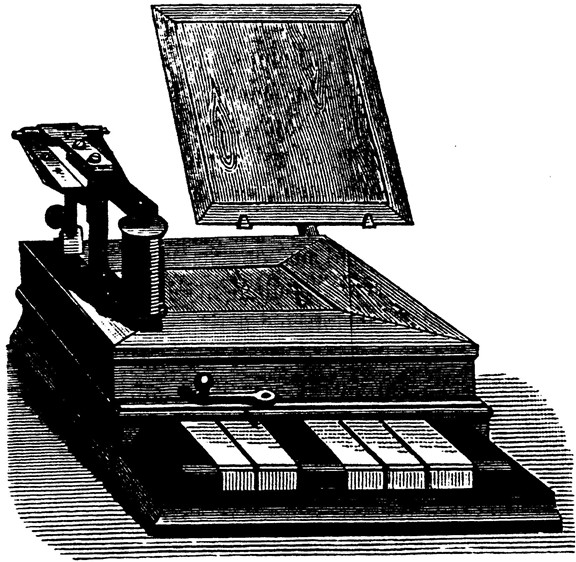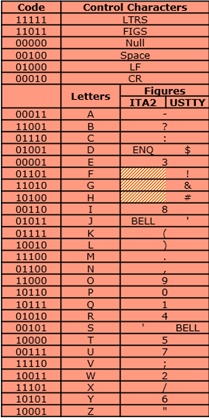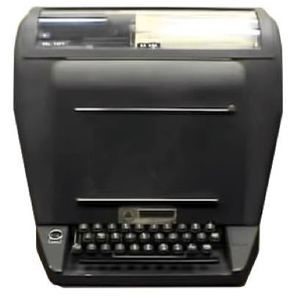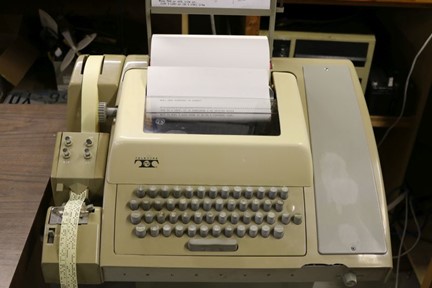It may surprise some that the RTTY (Radioteletype) mode we use today can be traced back nearly 190 years. Carl Friedrich Gauss and Wilhelm Weber constructed the first telegraph in 1833, connecting two departments within the University of Gottingen, Germany. In 1849, the first landline teleprinter connection was made between Philadelphia and New York City.
Twenty years later in 1870, Frenchman Emile Baudot invented the Baudot 6-bit code that is the foundation of RTTY communications today. Emile was a farmer’s son who left agriculture as a young man to join the French Post & Telegraph Administration as an apprentice operator in 1869. His primary schooling as a child was his only formal education, yet it was just a year into his telegraph apprenticeship that he devised the code we still use today.
Even more impressive, Emile made two additional contributions by the time his Baudot code was patented in 1874. He made use of the inherent dead time during transmission to create a time-multiplex system where several messages could be transmitted in parallel on a single telegraph line.
Emile also designed an electro-mechanical teletype system to transmit his multiplexed code based on adaptations of a printing mechanism invented by Bernard Meyer in 1871 and the Gauss/Weber telegraph from 1833. In 1876, he also modified his 6-bit code to 5 bits based on the Gauss/Weber code work. A simple 5-key piano-like keyboard was used by the telegrapher to type in the code, much like using a hand key for sending Morse code.

As early as 1887, this technology progressed to integrated teleprinter devices. The teleprinter, with its QWERTY keyboard, was invented by Donald Murray, a New Zealander who also started out as a farmer before working in the newspaper business and going on to engineering college. In 1899, he went to New York to patent his teleprinter and modified Baudot code, called the Murray Code. He soon moved to London before selling his patent in 1925 and retiring to Monte Carlo and Switzerland to study philosophy.
The Baudot code evolved to the ITA2 code (International Telegraph Alphabet No. 2) in 1924 as an international standard. The U.S. standardized a version of ITA2 called the American Teletypewriter Code (U.S. TTY). This evolved to the 7-bit ASCII code prevalent in the computer age. By going to 7 bits, the complexity of Letter shifts and Figure shifts was eliminated.

The “RTTY” term came to be when a modem and radio were added to the basic teleprinter for wireless telegraph operation. Teletype was a trademark of the Teletype Corporation in Skokie, IL, which was part of AT&T. Products ranged from the Model 14, invented by the original company in 1928, to Models 42 and 43 in 1977, and the Dataspeed 40 in 1979. The Model 28 from 1951 provided three configurations: RO (receive only), KSR (keyboard send/receive), and ASR (automatic send/receive).
Amateur radio started using the Model 26 in 1946 as units went into the surplus market from World War II.

Ultimately, the Model 33 ASR became very popular with Hams.

With the influx of Model 26 Teletypes into the amateur market, RTTY operation quickly grew. In 1946, the VHF Teletype Society was formed in Woodside, NY, with the first known amateur RTTY QSO between W1AUF and W2BFD in May of that year. AFSK modulation using “make and break” keying was used because FSK was not yet authorized by the FCC. On January 31, 1949, the first coast-to-coast QSO took place between W1AW (W1QVF, operator) and W6PSW. In 1956, the first U.S. to New Zealand RTTY QSO took place between W0BP and ZL1WB.
FSK modulation at 850 Hz shift was believed technically superior to AFSK at the time. It was petitioned to the FCC which officially authorized it on February 20, 1953. W6AEE, publisher of RTTYby the Radio Society of Southern California, and W2NSD, publisher of 73, were the key petitioners. With today’s technology, AFSK and FSK are equally sound modulation techniques, given properly configured and adjusted radios and encoders.
The 850 Hz shift proved too wide for the HF amateur bands. In March 1956, the FCC amended its regulation to allow any shift less than 900 Hz. Commercial RTTY operators had already discovered the superiority of narrow-shift.
In the 1950s and 1960s, most amateur modulators and demodulators were homebrew. FSK was accomplished initially with a diode switching a capacitor to shift the transmitter frequency. This technique was relatively unstable, especially on the higher HF bands. In the mid-1960s, transmitters began using crystal-controlled HF oscillators which improved stability.
The FCC authorized four standard speeds on January 7, 1972: 60 wpm (45.45 baud); 67 wpm (50 baud); 75 wpm (56.25 baud); and 100 wpm (75 baud). On March 17, 1980, the FCC authorized ASCII on 28-225 MHz. On June 15, 1983, the FCC eliminated the requirement to ID with Morse code at the beginning and end of each digital transmission and every ten minutes.
In the 1980s, solid-state hardware modems replaced older technology with the AEA PK-232 unit, quite popular among Hams. In June 2000, JE3HHT introduced MMTTY, a free software modem that quickly dominated amateur RTTY operation and remains popular today. In late 2021, the free 2Tone software modem was introduced by G3YYD with some improvements over MMTTY. Many people feel 2Tone is overall superior.
Honors and Contesting
The first DXCC was achieved by ON4BX in 1971. The first RTTY WAC was achieved by VE7KX in early 1977. Both awards were initially conceived by the RTTY Journal(renamed fromRTTY), with CQ magazine picking up the RTTY WAC in the 1980s and the RTTY DXCC transitioning to the ARRL on November 1, 1976.
The first RTTY contest was held October 31-November 1, 1953. It was sponsored by RTTYand named the RTTY Sweepstakes Contest. There were 29 participants using a long exchange, similar to the ARRL Sweepstakes: serial number, call sign, check, ARRL section, local time/date and (in later years) band.
The RTTY Journal ceased publication and the RTTY Sweepstakes Contest morphed into the CQ WW RTTY DX Contest, sponsored by CQ magazine in 1987. It has operated continually to today. Logs received have grown from 280 to over 3,000 in recent years.
A number of other digital modes emerged in the late 1990s. PSK31 was one of the more popular. WSJT was introduced in 2001 with a number of different protocols for different applications (e.g., EME). The JT9 protocol became the most popular on HF and VHF, but was supplanted overnight by FT8 in 2017. The first FT8 contest was held a year later.
As a result, there is almost no RTTY activity today on the amateur bands outside of contests and some DXpeditions. In fact, FT8 and FT4 dominate daily amateur band activity. DXpeditions have largely abandoned the RTTY mode in favor of FT8, which is more effective overall in getting QSOs into the log, especially from smaller stations.
RTTY contest activity has remained high with record participation since the COVID-19 outbreak in early 2020. FT contesting has so far not proven to be as popular among contesters, with submitted logs numbering a third to a half of those received in major RTTY contests.

